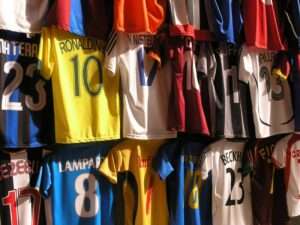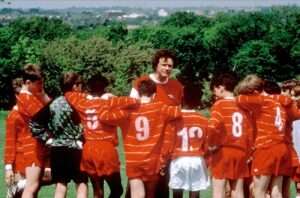Catenaccio was a form of defensive soccer used primarily in the 1960s and 70s.
Meaning literally “door-bolt” or “lock” in Italian, the system was made famous by Inter Milan coach Helenio Herrera who won two European Cups and three Serie A titles with the club in the 60s.
Catenaccio can trace its origins to Swiss soccer in the 1930s and 40s where Austrian coach Karl Rappan used the verrou (“doorbolt/chain” in French) system when in charge of the national team.
Rappan used a defensive sweeper called the verrouilleur who operated just in front of the goalkeeper and behind the defenders.
Italian supporters got a first real look at the system when Giuseppe Viani used it at Salernitana in the late 40s. Nereo Rocco’s also Triestina pulled off a second place finish in 1947 using the system. Rocco then went on to employ it at Padova in the 50s, and achieved success with AC Milan, winning the European Cup and Serie A.
Catenaccio was not restricted to one single formation, and although the 1-3-3-3 was popular, 1-4-4-1 and 1-4-3-2 systems were also employed.
Teams using the system would play with extreme caution, hoping to score once and then close the game out, showing little ambition in the attacking third. Much emphasis was placed on the counterattack.
The sweeper played a key role in his position in front of the goalkeeper, man marking (double marking if necessary), acting as cover for the defense and clearing up loose balls.
It was the feisty Herrera who achieved genuine success using Catenaccio with Inter. He used a man-marking back four, with the sweeper picking up the loose balls. When in possession of the ball, his full-back Giacinto Facchetti would bomb forward to provide width. Facchetti was vital to Herrera’s counterattacking philosophy with his ability to sprint 100 meters in just 11 seconds.
The team so often relied on the genius of Sandro Mazzola behind the main striker and it was thanks in no small part to such a player that the system was deemed a success, because for all the emphasis on defense, the team needed a talisman, and Mazzola was the link man in La Grande Inter.
The likes of Luis Suarez behind him were also crucial to the counterattack and together they dominated domestically and in Europe.
Celtic’s win over Inter in the 1967 European Cup final was a blow to Catenaccio, while the Dutch press also announced its demise after Rinus Michels’ Total Football playing Ajax beat the Nerazzurri 2-0 in the 1972 European Cup final. Rocco’s AC Milan team were also thrashed 6-0 by Ajax in the European Super Cup the following year.
Catenaccio is rarely used these days, with the position of sweeper now almost redundant.






